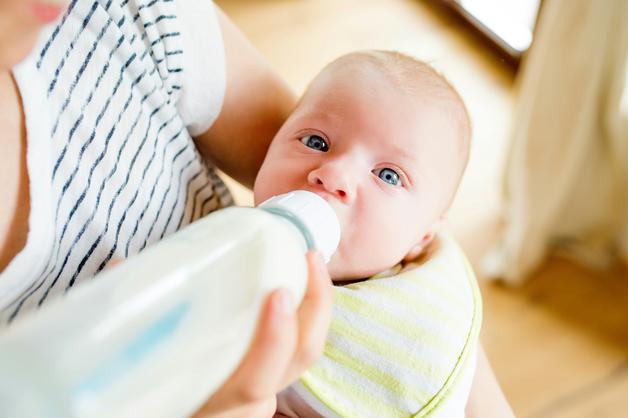Neonatal jaundice—just the name might evoke a rush of questions, maybe a flicker of concern, perhaps a moment of helpless wonder. Parents, across countless households, find themselves closely inspecting their newborn’s skin, catching subtle yellow hues under the mellow daylight, questioning if everything is right. Why is this yellow tint so common in babies? Should you worry if your baby’s eyes seem a bit golden, or if the colour hasn’t faded as you’d hoped? Let’s dive deep—exploring the reasons behind neonatal jaundice, ways to easily spot warning signs, proven treatment strategies, and most importantly, how to safeguard your baby’s health without losing sleep over every little change. Along the way, discover practical medical advice, answers to your worries, new perspectives, and support that won’t let you down.
Understanding neonatal jaundice: what, when, and why?
Neonatal jaundice is not just a medical phrase tossed around in the nursery—it describes a yellowish discolouration of the skin and eyes in newborns, caused by the accumulation of bilirubin. Wondering what bilirubin is? It’s a yellow pigment produced when the body breaks down red blood cells, something entirely natural and ongoing. Here’s the twist: newborns, especially those born before term, have immature livers—think of it as an under-trained processing plant—unable to eliminate bilirubin as fast as it accumulates. What does this mean in plain words? Over 60% of full-term babies and a whopping 80% of preterm infants will show some signs of jaundice, mostly between 2-4 days after birth. For many, it fades away with nothing but time; for a few, an escalation requires swift intervention.
But is every yellow baby the same? Not quite. Sometimes, the cause is simply physiological—part of normal newborn adaptation—while at other times, underlying diseases or genetics nudge bilirubin into risky territory, demanding greater attention. The variety of causes, presentations, and responses to treatment is what makes neonatal jaundice a topic every parent ought to be familiar with.
Why does bilirubin build up? A spotlight on newborn physiology
When babies are born, their bodies switch gears in dramatic ways. Red blood cells are replaced at a brisk pace, and the new liver takes charge of handling bilirubin—a process known as conjugation. But this liver, fresh on the job, isn’t always efficient enough, leading to a back-up of unconjugated bilirubin floating in the blood. As levels climb, the pigment seeps into the skin and eyes, giving that classic yellow tint. Is it only the liver at play? No—frequent factors like premature birth, blood group mismatches (like ABO or Rh incompatibility), G6PD deficiency, or even certain infections may further accelerate red cell destruction or bottleneck bilirubin processing.
Types and causes of neonatal jaundice
Physiological jaundice
Meet the most frequent type, developing after the baby’s first day, peaking between days 2–5, and gently resolving without any interventions by two weeks. It’s mostly a benign, expected fallout from adjusting to life outside the womb. Babies eat, poop, and the pigment eventually gets processed away.
Pathological jaundice
But when should parental eyebrows rise? If jaundice shows up within the first 24 hours, lasts past two weeks, or tags along with other signs of illness, it’s often pointing to a pathological cause. These scenarios call for rapid assessment—since untreated high bilirubin can harm the brain (think acute bilirubin encephalopathy or even kernicterus).
Hemolytic and genetic factors
Red cell breakdown outpaces the norm in some babies—thanks to conditions like ABO/Rh incompatibility, inherited disorders such as hereditary spherocytosis, or enzyme issues like G6PD deficiency. These factors can lead to brisk rises in bilirubin, often requiring prompt medical attention.
Feeding-related jaundice
Jaundice isn’t just about biology—sometimes, it’s about what (or how much) your baby eats. Breastfeeding jaundice often pops up when initial milk intake is low, raising bilirubin reabsorption. Breast milk jaundice (not to be confused!) surfaces after a week, typically owing to specific breast milk components affecting bilirubin breakdown. Both types, while generally harmless, can cause concern if feeding isn’t established well.
Other underlying causes
Prematurity, infections from the perinatal period, or rare metabolic and genetic disorders (like disorders in the biliary system) may complicate the picture. If any of these exist alongside jaundice, more intensive monitoring and specialist management may be advised.
Risk factors worth watching
Some families are more likely to deal with neonatal jaundice—those with a family history of hemolytic issues, ethnic backgrounds prone to G6PD deficiency, babies born before 38 weeks, or little ones struggling with feeding. Bruising during birth or early discharge from the hospital can tip the scales too.
Key warning signs and how to recognise them at home
Spotting neonatal jaundice starts with vigilant observation—does the skin tone, especially on the face or chest, seem tinged with yellow? Is the white of the eye (the sclera) no longer clear but lemony? For babies with darker skin shades, subtle changes under the tongue, palms, or soles might tell the real story. Don’t rely on artificial lighting—natural daylight is best.
But more than colour, it’s the general state of your baby that matters. Look for:
- Unusual sleepiness (is your baby too difficult to wake?),
- A high-pitched cry,
- Poor or lazy feeding,
- Fewer wet or dirty diapers than normal,
- Fever, limpness, or stiffness.
A practical tip: press gently on your baby’s forehead or nose, then watch—the blanched area should appear yellow if jaundice is present. Does the yellow seem deeper today than yesterday? Is it spreading? These are cues for a doctor’s input.
How is neonatal jaundice diagnosed?
Doctors use a mix of clinical examination—systematically charting where jaundice has spread—and technology. A transcutaneous bilirubin meter painlessly measures levels through the skin, but a confirmatory serum bilirubin test (small blood sample) tells the full story. Sometimes, additional blood work (like the Coombs test for immune-related jaundice, full blood counts, G6PD screening, or infection markers) is needed when the story isn’t straightforward.
It’s essential to distinguish:
- Physiological jaundice: appears after 24 hours, resolves within two weeks, and generally remains mild.
- Pathological jaundice: shows up early, rises suddenly, persists, or aligns with illness.
The doctor will also check for unconjugated (typically benign) versus conjugated bilirubin (which can indicate liver or bile duct issues needing special attention).
Why timely treatment matters: possible complications
Mild neonatal jaundice often resolves naturally, but if bilirubin levels climb too high, there’s risk for serious neurological complications, such as acute bilirubin encephalopathy—manifesting as lethargy, poor suck, muscle floppiness or rigidity, and even seizures. Persistent, severe untreated jaundice can lead to kernicterus—long-lasting brain damage causing movement disorders, hearing loss, or learning difficulties. Preterm babies and those with risk factors deserve even more careful monitoring.
Treatment options: what works and when?
Phototherapy
For most moderate or significant cases of neonatal jaundice, phototherapy is the frontline—your baby is gently placed under blue spectrum lights, which transform bilirubin into an excretable form. Hospital phototherapy allows close supervision and rapid results, while some mild, stable cases can continue light treatment at home with professional supervision.
Exchange transfusion
Sometimes, standard remedies aren’t enough. If bilirubin peaks alarmingly or resists phototherapy, doctors perform an exchange transfusion—replacing small amounts of the baby’s blood with donor blood, rapidly cutting bilirubin levels and removing problematic antibodies.
IVIG and treating root causes
For immune-based jaundice (from blood group incompatibility), intravenous immunoglobulin (IVIG) can help dampen red cell destruction. Infections or genetic disorders are addressed as per the underlying problem—therapies become more tailored in these scenarios.
Practical care at home
Early and frequent feeding—regardless of whether you’re breastfeeding or using formula—remains a primary strategy. Regular feeds stimulate more bowel movements, accelerating bilirubin excretion. Safe, brief daily exposure to indirect sunlight (not direct exposure) may assist in mild cases—simply place your baby near a bright window for a few minutes, but never leave exposed skin under harsh sun. Continuous monitoring and scheduled follow-ups secure the path to complete recovery.
Preventing neonatal jaundice (or reducing its risks)
- Start feeding (breast or formula) as soon as possible after birth, aiming for eight to twelve feeds in 24 hours.
- Ensure every newborn undergoes screening for jaundice before hospital discharge, especially for those leaving early.
- Babies at higher risk, those with rising or borderline bilirubin, need prompt and frequent follow-up visits.
- Prenatal blood tests can spot possible mother-baby incompatibilities early, allowing proactive planning with your health team.
- Know when to seek advice—if the yellowing increases, your baby has fewer wet/dirty nappies, seems listless, stops feeding well, or has dark urine/pale stools, contact your paediatrician at once.
Everyday support: tips and reassurance for families
- Encourage effective feeding—do not hesitate to seek advice from nurses or lactation clinicians if unsure about latch or milk flow.
- Track nappy output and feeds; it gives both you and your doctor essential clues about your baby’s progress.
- Check your baby’s skin and eyes regularly, especially in natural daylight, and note any changes—documentation helps in follow-up assessments.
- When worried, trust your instincts. If your baby seems unusually sleepy, refuses feeds, or develops a sharp cry, immediate medical assessment is best—even if only for peace of mind.
- Remember, most cases of neonatal jaundice are gently transient and settle with time, regular feeding, and parental vigilance. Medical support in these situations is both effective and reassuring.
Key Takeaways
- Neonatal jaundice is a frequent, mostly harmless condition driven by natural changes in newborns, but early recognition can make all the difference for rare, severe cases.
- Parents should watch for yellowing skin and eyes, weak sucking, lethargy, or unexpected symptoms—especially during the precious first week of life.
- Mild cases usually remit as feeding gets established; persistent, quickly escalating, or early-appearing jaundice merits quick medical review.
- Phototherapy leads treatment for higher bilirubin, ensuring safe, smooth recovery.
- Scheduled follow-ups and attentive home care protect your baby, and a dedicated paediatric team stands ready to help transform worry into confidence.
- For ongoing personalised tips, paediatrician-validated advice, and free health questionnaires for your child, download the application Heloa.
Questions Parents Ask
How long does it take for neonatal jaundice to go away?
Typically, most neonates recover from jaundice in about one to two weeks. The yellow discolouration starts fading first from the face, then down the body. The individual timeline varies—some babies take less time, others a bit longer, particularly if they were premature or have extra risk factors. If you see the yellow colour continuing beyond two weeks or your baby acts unwell, checking in with the doctor brings timely reassurance and direction.
Can neonatal jaundice come back after it goes away?
While it’s not frequent, a mild recurrence may occur—mainly if underlying reasons such as feeding issues or rare metabolic difficulties weren’t entirely resolved initially. Usually, this is not a major worry, but if the yellow tint resurfaces intensely or your little one begins feeding poorly or appears drowsy, it’s wise to consult the paediatrician.
Is breastfeeding safe if my baby has neonatal jaundice?
Absolutely—breastfeeding is encouraged and beneficial for nearly all cases of neonatal jaundice. Regular feeds help eliminate bilirubin through stools. Some mothers may need guidance if initial milk flow is low; healthcare professionals and lactation consultants are always prepared to assist. The essential factor: whether breastfeeding, bottle-feeding, or mixed feeding, ensuring your baby is well-fed provides the best environment for healthy recovery. Every family’s approach is respected, and support remains available every step of the way.
Further reading:









